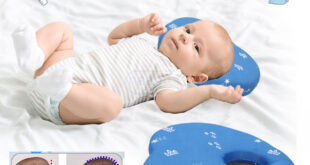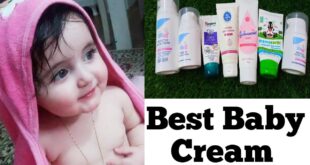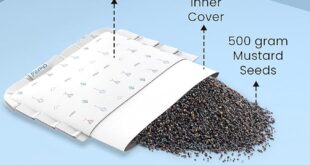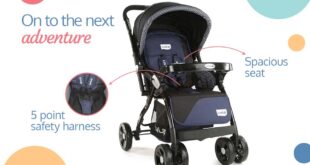Baby diapers
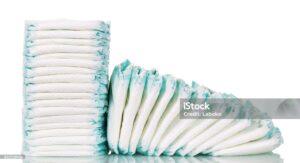
Baby Diapers are absorbent garments worn by infants to catch urine and stool. They come in two main types: disposable (easy to use, single-use) and cloth (reusable, eco-friendly). Baby Diapers vary by size based on the baby’s weight and should be changed every 2–4 hours to keep the baby dry and prevent rashes. Popular brands include Pampers, Huggies, and MamyPoko.
Types of Baby Diapers:
1. Disposable Diapers –
Convenient, one-time use. Brands include Pampers, Huggies, MamyPoko, etc.
Components of Disposable Diapers
Top Sheet – Soft inner layer that touches the baby’s skin.
Absorbent Core – Contains superabsorbent polymers (SAP) and fluff pulp to trap liquid.
Back Sheet – Outer waterproof layer to prevent leaks.
Elastic Bands – Around the legs and waist for a snug fit.
Adhesive Tabs or Velcro – These are used to fasten the diaper securely.
Advantages of Disposable Diapers
Convenient – Easy to use and dispose of.
Hygienic – Reduces chances of diaper rash if changed frequently.
Highly Absorbent – Can hold moisture for long periods.
Leak Protection – Great for overnight use.
Disadvantages of Disposable Diapers
Environmental Impact – Non-biodegradable; takes hundreds of years to decompose.
Costly – Ongoing monthly expense.
Possible Skin Irritation – If not changed regularly or for sensitive skin.
Chemical Exposure – May contain dyes, fragrances, or gels.
2. Cloth Diapers –
Reusable, eco-friendly, and economical in the long run.
Cloth diapers are washable, reusable diapers made from natural or synthetic fabrics. They come in various styles and can be used from birth to potty training with proper care.
Types of Cloth Diapers
-
Flats & Prefolds – Old-fashioned, rectangular pieces of cotton folded and secured with pins or fasteners.
-
Fitted Diapers – Shaped like disposables but need a waterproof cover.
-
Pocket Diapers – Waterproof outer shell with a pocket to insert absorbent pads.
-
All-in-One (AIO) – Everything (absorbent layer + cover) stitched together; convenient but slower to dry.
-
All-in-Two (AI2) – Similar to AIO but inserts are detachable for faster drying.
-
Hybrid Diapers – Cloth cover with option to use disposable or cloth inserts.
Advantages of Cloth Diapers
-
Eco-Friendly – Reusable; reduces landfill waste.
-
Cost-Effective Long-Term – Higher initial cost but saves money over time.
-
Chemical-Free – Gentler on sensitive skin; fewer rashes.
-
Breathable – Allows better airflow.
Disadvantages of Cloth Diapers
-
Requires washing – Needs regular laundering.
-
Initial Cost – Higher upfront investment.
-
Learning Curve – Needs time to understand folding, fitting, and care.
-
Less Convenient While Traveling – Carrying soiled diapers can be challenging.
Washing & Care Tips for Cloth Diapers
-
Pre-rinse to remove waste.
-
Main wash with detergent in hot water.
-
Line dry under the sun (acts as a natural disinfectant).
-
Avoid fabric softeners or bleach.
Popular Cloth Baby Diaper Brands in India
-
SuperBottoms
-
Bumpadum
-
Alvababy (international but widely available)
-
Kanga Care
-
Charlie Banana
-
Snugkins
3. Pull-Up Diapers –
-
Ideal for toddlers during potty training.
Pull-up diapers are disposable or reusable diaper pants designed like regular underwear. They’re mainly used during potty training or for toddlers transitioning from diapers to underwear.
Who Uses Pull-Ups?
-
Toddlers aged 18 months to 4 years (approx)
-
Children are learning toilet training, but not yet fully potty trained
-
Sometimes used for overnight protection for older children with bedwetting issues
Key Features: Pull-Up Diapers
-
Elastic waistband – Allows the child to “pull up” and “pull down” like underwear
-
Leak guards – Protection similar to regular diapers
-
Absorbent core – Soaks up urine and minor accidents
-
Tear-away sides – Easy removal after accidents
-
Wetness indicators (in some brands) – Help parents know when it’s time for a change
Advantages Key Features Pull-Up Diapers
-
Encourages independence during potty training
-
More comfortable and less bulky than regular diapers
-
Easy to put on and remove
-
Some come with fun designs to motivate kids
Disadvantages Key Features Pull-Up Diapers
-
Slightly more expensive than regular diapers
-
May leak more than snug-fitting diapers during heavy wetting or overnight use
-
Not suitable for newborns or infants
4. Swim Diapers –
Swim Baby diapers are waterproof diapers meant to be worn by babies and toddlers during swimming. Unlike regular diapers, they do not swell up in water and are made to contain solid waste, not urine.
How They Work
-
Do not absorb liquids (like urine) — absorbing would make them heavy and soggy
-
Designed to contain poop only, preventing pool contamination
-
Available in disposable and reusable options
Advantages of Swim Diapers
-
Essential for pools and beaches – often required by swim schools and public pools
-
No swelling – maintain shape and comfort in water
-
Reusable options are eco-friendly and budget-friendly over time
-
Come in fun prints and snug fits
Disadvantages of Swim Diapers
-
Do not absorb urine, so only useful during swimming
-
Need to be changed immediately after swimming
-
Disposable ones are not biodegradable
Types of Swim Baby Diapers
-
Disposable Swim Diapers
-
Single use
-
Easy to tear off after use
-
Brands: Pampers Splashers, Huggies Little Swimmers
-
-
Reusable Swim Baby Diapers
-
Made of fabric with a waterproof outer layer
-
Machine washable
-
Brands: SuperBottoms, Charlie Banana, Bummis, Alvababy
-
Tips for Use
-
Ensure a snug fit around the waist and thighs
-
Use only during swimming
-
Change immediately after swimming to prevent rashes
-
For infants, combine with a swimsuit or rash guard
Why You Need One
-
Most public pools require swim diapers for hygiene
-
Prevents embarrassing accidents in water
-
Promotes water play for babies without worry
Designed for use in water, they prevent leaks but don’t swell.
Key Features to Look For:
-
Absorbency: Keeps baby dry and prevents rashes.
-
Fit & Comfort: Elastic waistbands and stretch sides prevent leaks and offer comfort.
-
Breathability: Allows airflow to reduce rashes.
-
Wetness Indicator: Some diapers change color when wet.
-
Skin Sensitivity: Hypoallergenic materials for sensitive skin.
Diaper Sizes (Usually Based on Baby’s Weight):
| Size | Baby Weight |
|---|---|
| Newborn (NB) | Up to 5 kg |
| Small (S) | 4–8 kg |
| Medium (M) | 7–12 kg |
| Large (L) | 9–14 kg |
| XL | 12–17 kg |
| XXL | 15 kg and above |
How Often to Change Diapers:
-
Newborns: Every 2–3 hours or after every feed.
-
Older babies: Every 3–4 hours or when wet/soiled.
Common Baby Diapers Brands in India:
-
Pampers
-
Huggies
-
MamyPoko Pants
-
Supples
-
Himalaya Baby Care (herbal/organic option)
Get all the information about the Stroller and shop online
Get all the information about the baby walker and shop online
Get all the information about the baby carrying bag and shop online
 forbaby.in All Products which your Baby Deserves
forbaby.in All Products which your Baby Deserves
